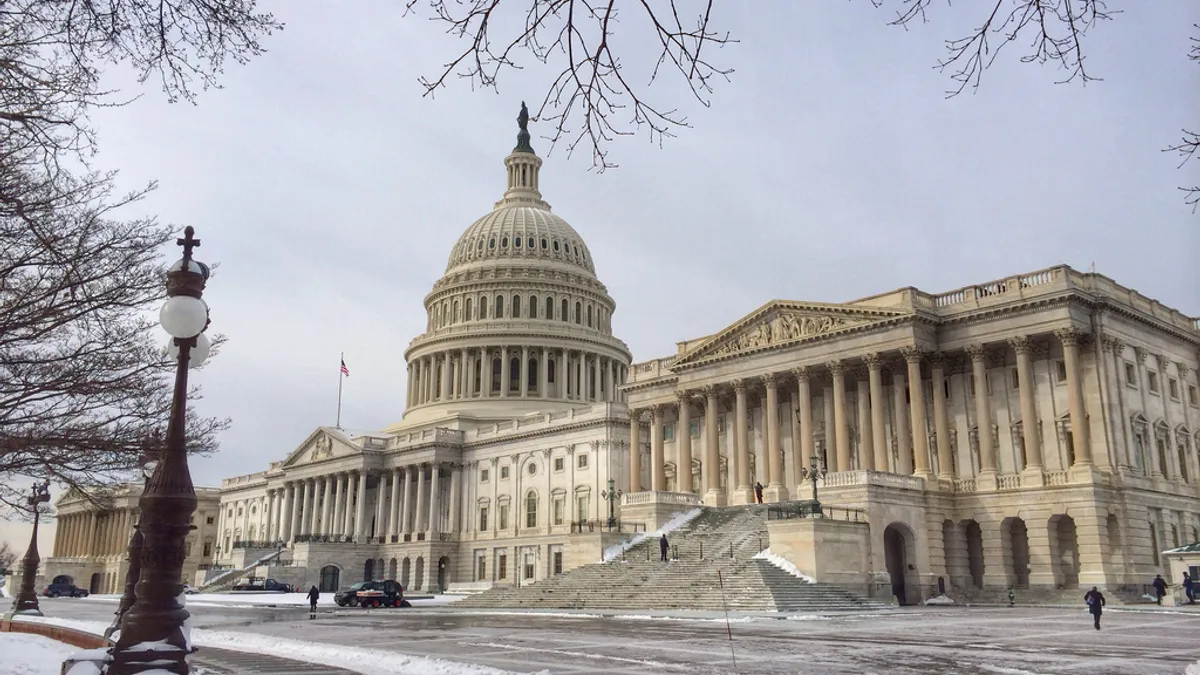Dive Brief:
- The Senate passed the Modernizing Government Technology Act (MGT Act) as a National Defense Authorization Act (NDAA) amendment on Monday, reports Nextgov. If it becomes a law, it will provide a $500 million fund over two years which agencies can tap into for IT modernization needs. It also serve as a savings fund fueled by cost-effective projects like cloud migration, according to the report.
- The initial draft was proposed by Rep. Will Hurd (R-TX) and passed in the House in May. Last year, an earlier version of the bill did not pass the Senate after the Congressional Budget Office estimated a $9 billion implementation cost despite its cost-savings purpose. Since then, Hurd revamped the bill and received positive approval from the Congressional Budget Office.
- The NDAA will be submitted to the House for review and is expected to again receive bipartisan approval. Representatives hope the use of new technologies will save taxpayers money and provide long overdue IT updates.
Dive Insight:
The Senate recognized the security risk of severely outdated IT and made it part of the NDAA. The U.S. government has an $80 billion IT budget, but 75% of it is dedicated to maintaining outdated infrastructure. There are approximately 3,400 IT government workers employed just to run "dead" codes on outdated systems.
In early proposals of the bill, Hurd argued the federal agencies need access and authority to modern applications or else they will face major setbacks in cost, security and efficiency. CIOs cannot be held accountable for setbacks if they are not given the authority and responsibility to manage their networks properly, said Hurd.
Congress and the Trump administration have made concerted efforts to streamline agency IT strategies and optimize workload capabilities. Updated federal IT will ultimately better secure sensitive information while also saving resources going toward maintenance on outdated legacy hardware. In December, the Trump transition team met with the CEOs of Amazon, Tesla, Microsoft, Apple and other top tech companies to coordinate budget savings of $1 trillion over ten years through modernization.
Due to the extensive data troves of many agencies, modernizing takes time. An audit performed by the Treasury Inspector General for Tax Administration in September found 64% of the IRS' IT infrastructure is "beyond its useful life." Operating with outdated hardware prevents the IRS from fully protecting its data as well as installing updated software.
Cloud migration for the IRS is daunting given the large quantity of civilian data. However, the organization is currently working under the security goal of having no more than 64% of its data compromised with its current outdated IT. The former goal was 25%.













